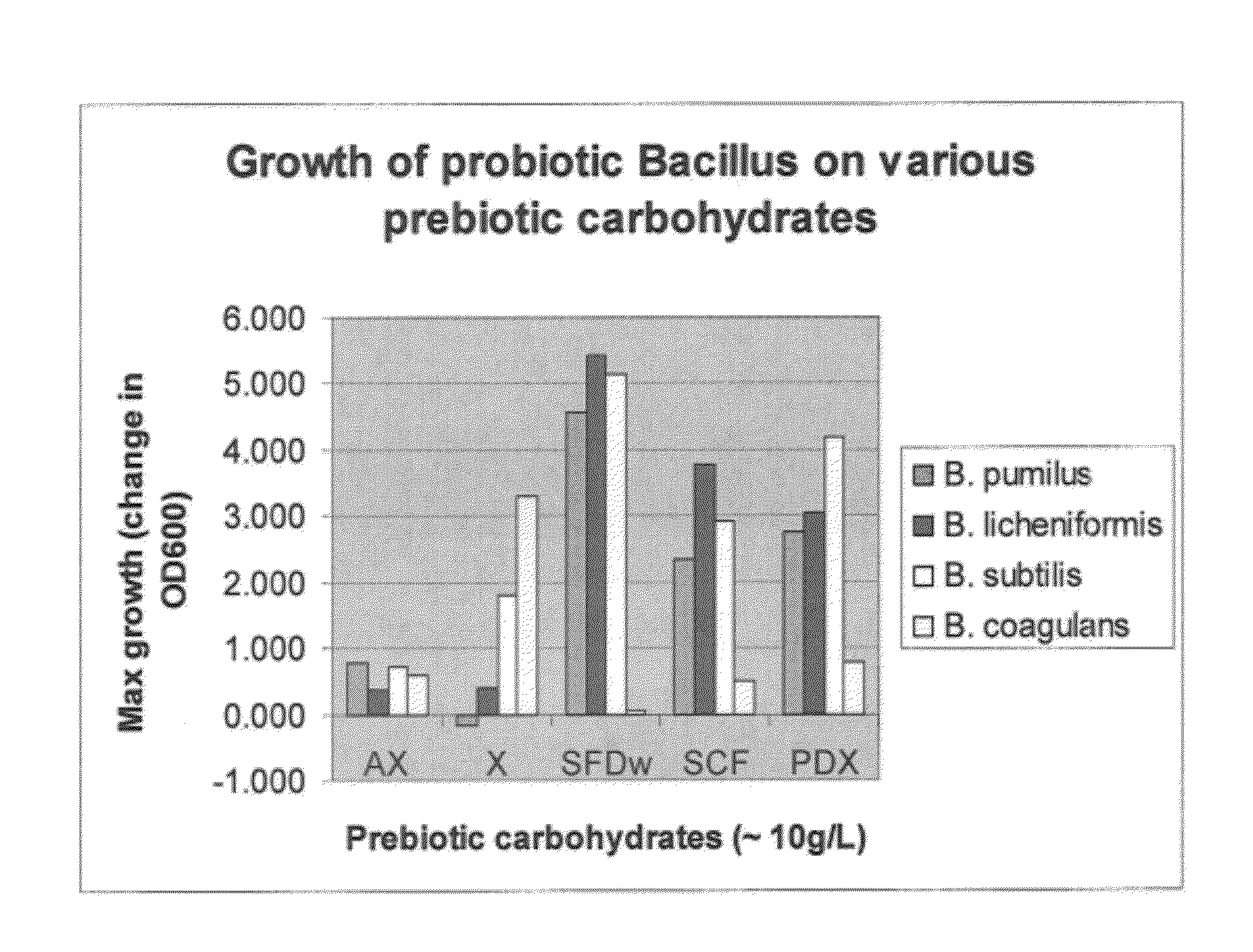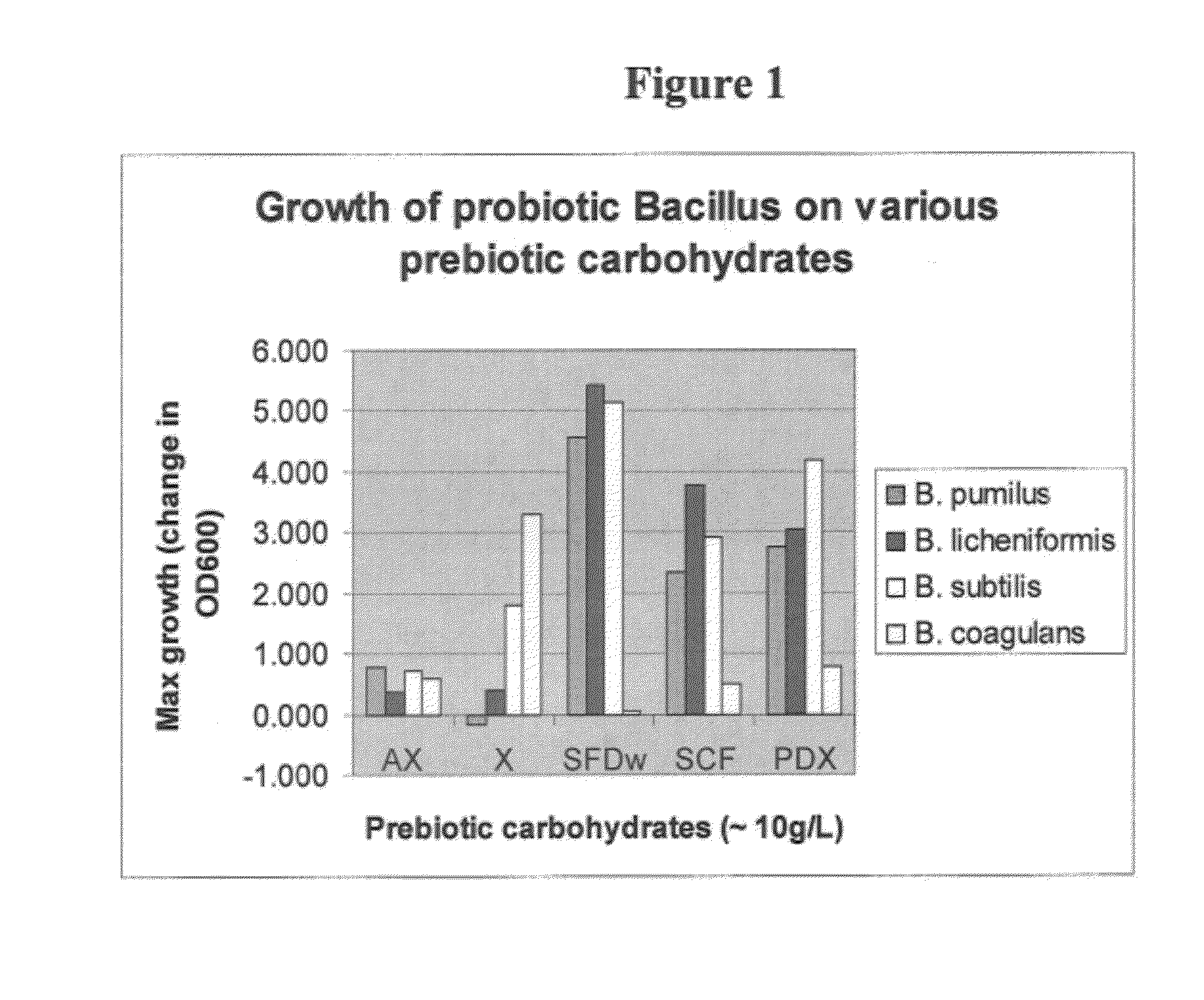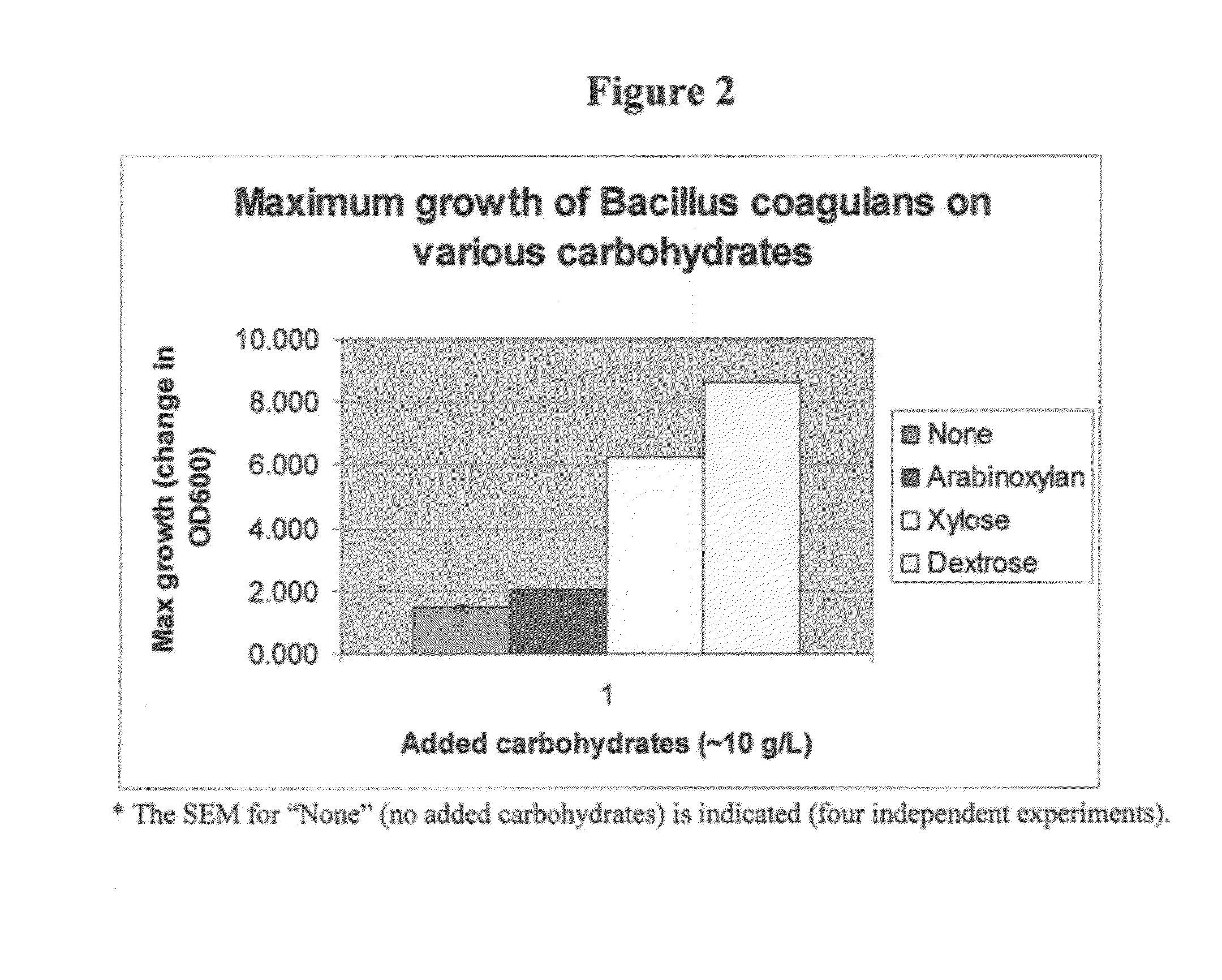Synbiotic product
a technology of synbiotic products and spores, applied in the field of synbiotic products, can solve the problems of difficulty in using either of these bacterial groups as probiotic food or feed additives, and achieve the effect of increasing the titer of spore formation
- Summary
- Abstract
- Description
- Claims
- Application Information
AI Technical Summary
Benefits of technology
Problems solved by technology
Method used
Image
Examples
example 1
Growth of Probiotic Bacillus on Various Prebiotic Carbohydrates
[0057]Four commercial spore-forming probiotic Bacillus strains were grown on prebiotic carbohydrates at 10 g / L. (See FIG. 1). The four strains were B. pumilus, B. licheniformis, B. subtilis, and B. coagulans. The prebiotic carbohydrates were high molecular weight arabinoxylan (AX), xylose (X), soluble fiber dextrin (waxy) (SFDw), soluble corn fiber (85) (SCF), and polydextrose (PDX). As a measure of the significance of the data shown in FIG. 1, Table 1 indicates P values for the B. coagulans data.
[0058]
TABLE 1Maximum Growth of B. coagulans on VariousPrebiotic Substrates Relative to Maximum Growthon “None” (no added carbohydrates).Arabinoxylan (high molecular weight) (AX)P Xylose (X)P Soluble Fiber Dextrin (waxy) (SFDw)P > 0.75Soluble Corn Fiber (85) (SCF)P Polydextrose (PDX)P
[0059]There was significant growth of B. coagulans on four of five of the prebiotic substrates. No significant growth was observed on SFDw. The sig...
example 2
Comparison of Maximum Growth of B. coagulans on Various Carbohydrates
[0065]The maximum growth of probiotic B. coagulans strain GBI-30 (ATCC Designation Number PTA-6086; U.S. Pat. No. 6,849,256) (Ganeden Biotech, Inc.; Mayfield Heights, Ohio) was compared on the carbohydrates arabinoxylan, xylose, and dextrose at ˜10 g / L and against addition of no carbohydrates (FIG. 2). The results demonstrate that a known spore-forming probiotic bacteria is capable of strong growth on prebiotic carbohydrates such as xylose.
example 3
Pour Plate Method for Determining the Viable Spore Count
[0066]To avoid the possibility of error, it is preferable to carry out spore counts in not less than three samples of spore concentrate because spores have a tendency to clump together and settle. Clumps should be dispersed by thorough agitation, such as shaking, before drawing samples for counting.
Protocol:
[0067]A. Put 8 test tubes in a test rack, number them, and add 9 ml of physiological saline solution to each tube.
[0068]B. Transfer one ml of spore suspension in the tube No. 1 by a pipette or tuberculin syringe.
[0069]C. By using a fresh tuberculin syringe or pipette, mix the first dilution several times and transfer 1 ml into the next tube. Make the remaining tenfold dilutions in the same way using a fresh syringe or pipette for each dilution.
[0070]D. Starting from highest dilution, pipette 1 ml from each dilution of 10−8, 10−7, and 10−6 into Petri dishes. For each dilution, five Petri dishes of 10 cm diameter are used.
[007...
PUM
| Property | Measurement | Unit |
|---|---|---|
| heat resistance | aaaaa | aaaaa |
| weight | aaaaa | aaaaa |
| weight | aaaaa | aaaaa |
Abstract
Description
Claims
Application Information
 Login to View More
Login to View More - R&D
- Intellectual Property
- Life Sciences
- Materials
- Tech Scout
- Unparalleled Data Quality
- Higher Quality Content
- 60% Fewer Hallucinations
Browse by: Latest US Patents, China's latest patents, Technical Efficacy Thesaurus, Application Domain, Technology Topic, Popular Technical Reports.
© 2025 PatSnap. All rights reserved.Legal|Privacy policy|Modern Slavery Act Transparency Statement|Sitemap|About US| Contact US: help@patsnap.com



